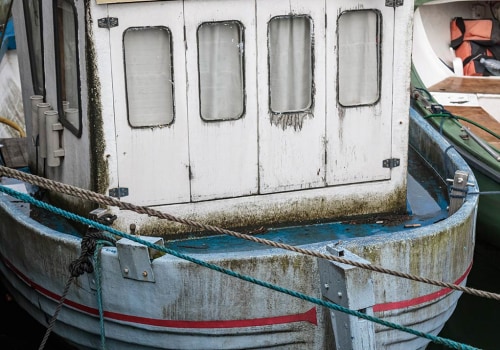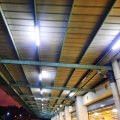Welcome to our comprehensive guide on fixed dock design! If you're looking to learn all about the ins and outs of constructing and installing a fixed dock near Ridgeville SC, you've come to the right place. In this article, we'll cover everything you need to know about fixed dock design, from the basics to more advanced concepts. Whether you're a dock owner or a professional in the marine industry, this article will provide valuable insights and tips for creating a sturdy and functional fixed dock near Ridgeville SC. So, let's dive in and explore the world of fixed dock design together!To start, we'll go over the basics of fixed docks near Ridgeville SC, including their purpose and benefits.
Fixed docks are permanent structures that are built along the shoreline and provide a stable platform for boats to dock. They offer a variety of benefits, such as providing easy access to the water, increasing the value of your property, and protecting your boat from damage. The construction process for fixed docks is crucial in ensuring their durability and functionality. The first step is to determine the ideal location for your dock. Factors to consider include water depth, current, and wind conditions.
It's also important to obtain any necessary permits from your local authorities before beginning construction. Next, you'll need to choose the right materials for your fixed dock. The most common materials used are wood, composite decking, and aluminum. Each material has its own pros and cons in terms of durability, maintenance, and cost. It's important to carefully weigh these factors before making a decision. The cost of building a fixed dock can vary depending on the size, materials used, and additional features such as boat lifts or lighting.
On average, you can expect to spend anywhere from $1,500 to $20,000. It's essential to budget accordingly and factor in any additional expenses such as permits or hiring a professional contractor. Once you have all the necessary materials and permits, it's time to begin the installation process. This typically involves driving pilings into the ground and securing them with concrete or braces. It's important to follow proper installation techniques to ensure the stability and longevity of your dock. Maintenance is key in keeping your fixed dock in top condition.
Regularly inspecting for any damage or wear and tear is crucial in catching any issues early on. Additionally, cleaning and treating the dock with appropriate products can help prevent deterioration and prolong its lifespan. When it comes to design, the options for fixed docks are endless. You can choose from a variety of styles, such as straight, T-shaped, L-shaped, or U-shaped. You can also add features like benches, ladders, or even a roof for added convenience and comfort.
It's important to consider both functionality and aesthetics when designing your fixed dock. In conclusion, fixed docks are an essential part of any waterfront property. By understanding the basics of their construction, installation, and maintenance, you can create a durable and functional dock that meets your needs. Be sure to carefully consider all factors and consult with professionals if needed. With the right knowledge and planning, you can enjoy your fixed dock for years to come.
Understanding Fixed Docks
In this section, we'll cover the basics of fixed docks, including their purpose and benefits.Design Ideas and Options
When it comes to designing a fixed dock, there are many options available to suit your specific needs and preferences.From the materials used to the layout and features, the design of your fixed dock can greatly impact its functionality and appearance. In this section, we'll explore different design options and ideas to help you create a functional and visually appealing fixed dock.
Installation and Maintenance
When it comes to fixed dock design, installation and maintenance are crucial aspects to consider. A poorly installed dock can lead to safety hazards and costly repairs, while proper maintenance can ensure its longevity and functionality. First and foremost, it's important to choose the right location for your fixed dock.The water depth, shoreline conditions, and potential weather patterns should all be taken into account. It's also important to obtain any necessary permits and ensure that the dock complies with local regulations. During the installation process, it's important to use high-quality materials and follow proper construction techniques. This will ensure that your dock is sturdy and able to withstand the elements.
It's also crucial to regularly inspect your dock for any signs of wear and tear, and make repairs as needed. Maintenance is key to keeping your fixed dock in top condition. This includes regular cleaning to prevent algae and mildew buildup, as well as checking for any loose or damaged components. It's also important to adjust the dock as needed due to changing water levels or shifting shorelines.
By following these tips and properly installing and maintaining your fixed dock, you can ensure its longevity and safety for years to come.
Building a Fixed Dock
When it comes to building a fixed dock, there are several important factors to consider. The first step is choosing the right location for your dock. This will largely depend on the water depth, shoreline conditions, and any local regulations or permits required. It's important to also think about accessibility and convenience for loading and unloading boats or other watercraft. Once you've determined the location, the next step is selecting materials for your dock.This can include wood, aluminum, steel, or composite materials. Each has its own pros and cons in terms of durability, maintenance, and cost. It's important to weigh these factors carefully and choose the material that best fits your needs and budget. Calculating costs is also an important part of the construction process. This includes not only the cost of materials but also any additional expenses such as labor, permits, and equipment rental.
It's important to have a clear understanding of the total cost before starting the construction process. In conclusion, fixed dock design is an important aspect of waterfront property ownership. By understanding the purpose and benefits of fixed docks, as well as the construction, installation, and maintenance process, you can create a safe and functional dock that meets your needs. With the right design, your fixed dock can also enhance the aesthetic appeal of your waterfront property. We hope this article has provided you with all the necessary information to make informed decisions about fixed dock design.






